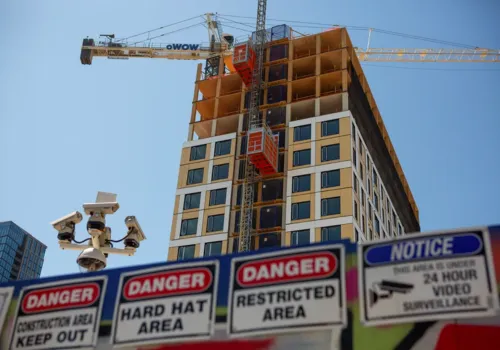
One of the biggest legal hurdles to housing construction in California has just been lifted. With the passage of a new budget-linked housing bill, the state has dramatically scaled back the reach of the California Environmental Quality Act (CEQA) — a landmark change that could reshape the future of urban development.
The legislation, introduced by Assemblymember Buffy Wicks and passed with only scattered opposition, exempts most urban infill housing projects from CEQA requirements. That means apartment buildings and similar developments in city areas will no longer face environmental lawsuits over traffic, noise, air quality, or other localized impacts — issues that have long delayed or derailed housing projects.

“Saying ‘no’ to housing in my community will no longer be state sanctioned,” said Wicks, a Democrat from Oakland. “This isn’t going to solve all of our housing problems in the state, but it is going to remove the single biggest impediment to building environmentally friendly housing.”
CEQA, passed more than 50 years ago, required state and local governments to study and publicly disclose the environmental impacts of any major development decisions — including housing permits. While intended as a tool for transparency, critics argue it became a weapon for NIMBY (Not In My Backyard) lawsuits and political delays.
“The one thing we do know is that CEQA is a time suck,” said Ben Metcalf, managing director at UC Berkeley’s Terner Center for Housing Innovation. “If you can just get out of that six months, nine months, twelfth months of delay, that takes a whole cohort of projects and gets them in the ground sooner. In a state that’s facing a housing crisis, that’s not for nothing.”
Under the new law:
“The lion share of housing being built” in California will no longer be governed by CEQA, said Mark Rhoades, a planning and development consultant in Berkeley.
“You don’t have to worry about labor and you don’t have to worry about CEQA? That’s a big deal,” said Bill Fulton, a UC San Diego urban planning professor.
This change is being hailed by many in the “Yes in My Backyard” (YIMBY) movement and housing advocates as a turning point.
“I think when we look back on what hopefully is California finally beginning to confront this housing crisis, this year — 2025 — and this bill will be viewed as a turning point,” said Assemblymember Matt Haney, chair of the state housing committee.
Back in 2016, then-Gov. Jerry Brown tried and failed to pass a CEQA streamlining bill. His plan, which required affordable housing units in exchange for faster approvals, was killed by a coalition of construction unions, environmentalists, and local government groups.
Fast forward to 2025, and a Democratic supermajority in the Legislature has now passed a far more sweeping bill — without an affordability mandate — with Governor Gavin Newsom pushing hard to include it in the state budget.
Even staunch opponents like the State Building and Construction Trades Council ultimately stepped back after winning limited labor protections, including a requirement that developers of 85-foot-tall buildings hire some union labor and that fully affordable housing projects pay prevailing wages.
“Affordable housing is forced to play by different rules because the state has decided that if you are receiving public funds a certain wage should be attached to it,” said Ray Pearl, executive director of the California Housing Consortium. He called the new prevailing wage rule “a head scratcher,” but said it mostly reaffirmed existing policy.
While CEQA’s critics say it often chilled development before it even began, others argue that legal barriers were never the only problem.
“I don’t think this is going to make more development happen,” said Rhoades. “It’s going to make development that is already happening a little easier.”
Developers still face hurdles like high labor costs, interest rates, local permitting, fees, tariffs, and immigration-related workforce issues.
Still, housing experts argue this law removes one of the most unpredictable and time-consuming burdens — the threat of CEQA litigation — which has delayed everything from student housing to projects near transit hubs.
“When you are building housing in an existing community, that is environmentally beneficial, it is climate friendly, that is not something that should be subjected to potentially endless CEQA challenges and lawsuits,” said Sen. Scott Wiener, who authored another CEQA-related reform bill also packed into the budget package.
The state now enters a new phase of housing policymaking: CEQA is no longer the go-to excuse for slow construction in California cities.
What happens next will depend on developers’ willingness to build, cities’ capacity to permit, and how quickly the state can deliver real housing units in response to sky-high rents, homelessness, and affordability crises.
As law professor Chris Elmendorf noted on social media, the final version of the bill may be “even better” than what advocates had originally hoped for.
Originally reported by Ben Christopher in Cal Matters.